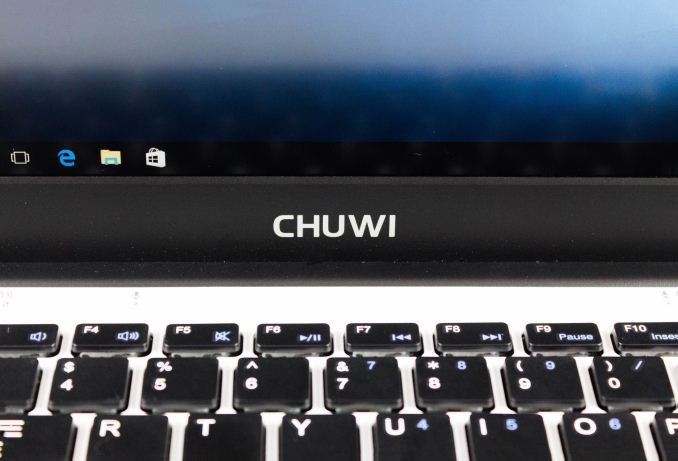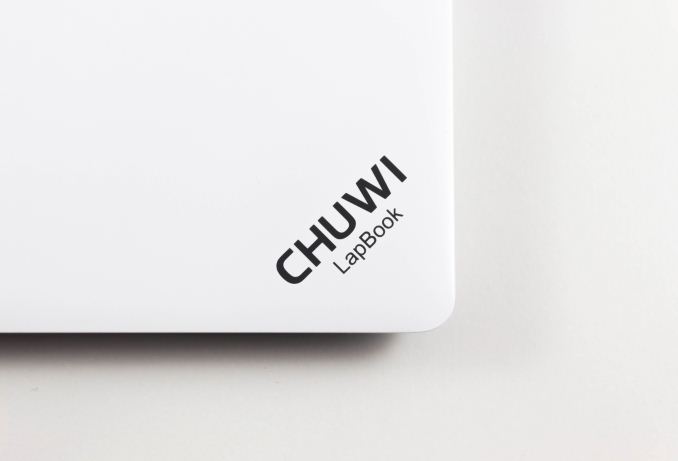The Chuwi LapBook 14.1 Review: Redefining Affordable
by Brett Howse on March 10, 2017 8:00 AM ESTFinal Words
Compromise is always a word that can evoke the wrong impressions, but it’s a fact of life that every laptop is full of compromise. The art is finding the right balance of compromise to fit into the target budget, while still providing the features that people need and expect. When discussing a laptop with a MSRP under $300 USD, this can be more pronounced than on a $2000 Ultrabook. Luckily, within a few hours of using the Chuwi Lapbook 14.1, you can see that the company has done a great job finding that balance of features and cost. There is a lot to like about this notebook from a Chinese company trying to make a splash on the world stage.
I think it’s the right place to start by talking about the display. It’s been a thorn in my side that any time a low-cost notebook is offered, almost exclusively they are still shipping with TN panels, often with 1366x768 resolutions. Heck, you can still find a TN display on $1000 gaming notebooks. Chuwi, by offering a 1920x1080 IPS display, has already moved a good step ahead of most of the competition. The fact that this is a 14-inch notebook really drives this home, since you don’t feel cramped like you would on a 11-inch model. That’s really only half of the story though, since Chuwi also implemented much thinner bezels than most of the notebooks in this price range, which gives you a much better display in a smaller footprint. Our display testing showed that the IPS is relatively good with color reproduction, although it does only cover less than 65% of the sRGB gamut. That’s not ideal, but it’s also a result of having to use lower cost LEDs to keep the display in-budget. I would think for most people this trade-off is the right kind of compromise. You still get the great viewing angles of IPS, along with very decent contrast on this device, all in a thin-bezel design. This is an easy win for Chuwi.
The overall notebook design is also very well done. The white plastic doesn’t have the premium feel of a metal laptop, but it looks good, it feels good, and is a nice choice in materials for something in this price range. The plastic does not feel brittle, and the matte texture gives plenty of grip. White is always going to be a concern long-term, with dirt and grime building up on it, but this is a sharp looking laptop.
Also, the move to Intel’s Apollo Lake SoC, with the new Goldmont CPU cores, and Gen 9 graphics, is a surprisingly solid platform. It doesn’t offer the snappy response of Intel’s Core lineup, but in light tasks, it is decent. Coupled with 4 GB of RAM helps a lot too, since some of these notebooks can be saddled with only 2 GB of memory, which is tough to use when a web page can use over a Gigabyte on its own. Also, the 64 GB of eMMC is reasonable quick, but it’s the volume here that is important, since 32 GB eMMC devices can be a burden to live with long-term. This isn’t going to set speed records, but a quad-core Goldmont with 4 GB of RAM and 64 GB of storage is a nice bit of kit in a notebook in this price range. Just don’t expect to do anything but the lowest end gaming.
Purchasing from a less familiar brand does bring about questions of long-term durability and support, and it’s difficult to comment on this when only using a device for a couple of months, but over the last couple of months it’s been solid. The reports of overheating are somewhat alarming, and although it looks like that can be fixed by the owner, it’s never a great sign. Whether that is just a few devices, or more, it’s tough to say, and Chuwi did not mention this being an issue when questioned on the matter. This one has not shown any signs of this though, and in fact the temperatures are very respectable for a fanless notebook. I have to mention it though.
For those that have the abilities to tackle the CPU heat transfer, it’s also interesting to note that if you remove the bottom of the notebook, there’s a M.2 slot for a SSD, so you can add extra storage this way, as well as through a micro SD card.
My only real complaint with the laptop was the battery life, which came in well under what I was expecting for a laptop with a 45 Wh battery and an Atom CPU. I think the display could be a major cause here though, since to get to our 200 nits brightness, the display was almost set at 100%, which is likely not the most efficient for the backlighting. It still delivered between six and eight hours of battery life, but I must admit I was expecting closer to ten or eleven hours.
Even with the concerns about CPU cooling, which I never experienced, it’s hard not to recommend this notebook. For around $250 USD, you get get decent performance, a 14-inch 1920x1080 display, 4 GB of RAM, and 64 GB of storage. The design is pleasant to look at, with a nice white color and thin display bezels, and it’s only a few pounds, so it’s pretty easy to carry around. As much as it’s fun to see the most powerful systems, it’s also great to see a well-executed take on the low-cost notebook, which is a market that has been neglected somewhat of late.
Chuwi is offering a $24 discount code on Amazon for AnandTech readers. Please enter the code TIUGTN5W at checkout













75 Comments
View All Comments
BrokenCrayons - Friday, March 10, 2017 - link
Chuwi hits all the right specifications for RAM and storage space that I'd like to see in a budget laptop and being fanless is nice too. I'd actually prefer a 11.6 inch screen and a 1366x768 screen because, for a small and cheap portable, 14 inches is actually more than I'd need and I'd rather push fewer pixels with the relatively weak GPU. Some of the touchpad and heat concerned expressed in the Amazon review section are a bit off-putting as well and I don't like an all white system. I just with HP would offer up a 64GB version of their Stream 11. If they did, I'd be falling all over myself to buy one.DanNeely - Friday, March 10, 2017 - link
According to what I found the really cheap windows license comes with a 32GB SSD requirement from MS. Assuming that's still the case 64GB would require HP to charge nearly $100 more for $10 of hardware, Chuwi is probably cheating MS to hit this price with 64GB.http://www.cnx-software.com/2016/09/02/hardware-re...
Bullwinkle J Moose - Friday, March 10, 2017 - link
Doubtful that 32GB is really an MS requirement but more likely the minimum recommended size for a boot driveI've restored Win 8.1 32-bit to 16GB and 64-bit 8.1 to 20GB boot partitions before
32GB is likely the smallest SSD boot drive you will see in actual use
If I had problems booting Windows from the internal M.2 slot, I would run Windows to Go from the USB3 port which is fast enough for this class of processor and can then easily switch to a Linux thumb drive whenever I like
A 256GB Corsair GTX thumb drive would boot Windows a hell of a lot faster than that internal 64GB eMMC drive anyway and provides better security for my data
For example, anyone stealing the laptop would have an empty internal drive while my data remains safe in my pocket until the insurance replaces the hardware
DanNeely - Saturday, March 11, 2017 - link
I'm pretty sure it's legit. That was just the 1st cite I found, but matches what I've seen a few other places since W10 launched. MS has offered heavily discounted windows installs to low end computers since the initial linux based netbooks appeared almost a decade ago. In one way or another they've always limited it to the lowest tier of systems. The fact that mainstream makers either don't offer 64GB varients or charge prices significantly above the cost of the extra flash (eg the HP stream is $200 vs 260 on Amazon) is strongly suggestive that its where they're currently setting the cutoff.32GB is restrictive enough (to the extent of causing problems with major win10 updates) that I wish MS would raise the limit to 64GB; but I haven't seen any evidence that they have. Other than that, the numbers are IMO reasonable for the netbook class system that have always been the targets of the program.
dragosmp - Friday, March 10, 2017 - link
Would you test the Asus 402 and 403 ? In a similar sort of vein, they're apparently marketed as "premium budget notebooks" and go for 250-350$. The difference is the 403 is 1080p and the 402 is 768p.I think this category has some potential. If I found a 4GB/1080p e403 in the UK I'd buy one now.
crimson117 - Friday, March 10, 2017 - link
I'm really hoping this laptop makes a Chewbacca sound when you open the lid.andychow - Friday, March 10, 2017 - link
In the registry, change the ExcludeFromCPL value for windowslogon to get the option in the sound panel, or just replace the windows logon .wav file directly.pattycake0147 - Friday, March 10, 2017 - link
Or provide you with some chewy granola bars in the box.wolfemane - Friday, March 10, 2017 - link
Nice! Very cool to see a review of this cool little device!!! I got one of these for my wife this past Christmas. Was on a flash sale @ Newegg for $200 and she really wanted a super cheap 2 in 1 type system that supported micro sd. Before recovering it I had 0 faith in the product at that price and really thought a far more expensive known brand would be better for what she was going to use it for. Boy was I wrong. Other than our main computers it's the single most used device in the house. A bit heavy, but works far better than I would have ever expected of such a cheap device. Color accuracy of the screen is the shining aspect of this little machine. The color accuracy is so good, and the performance is good enough to do basic quick photoshop work, that my wife now uses it to give clients "sneak peaks " post photo op.coder111 - Friday, March 10, 2017 - link
How well does this run Linux?Is there a version with Linux preinstalled?